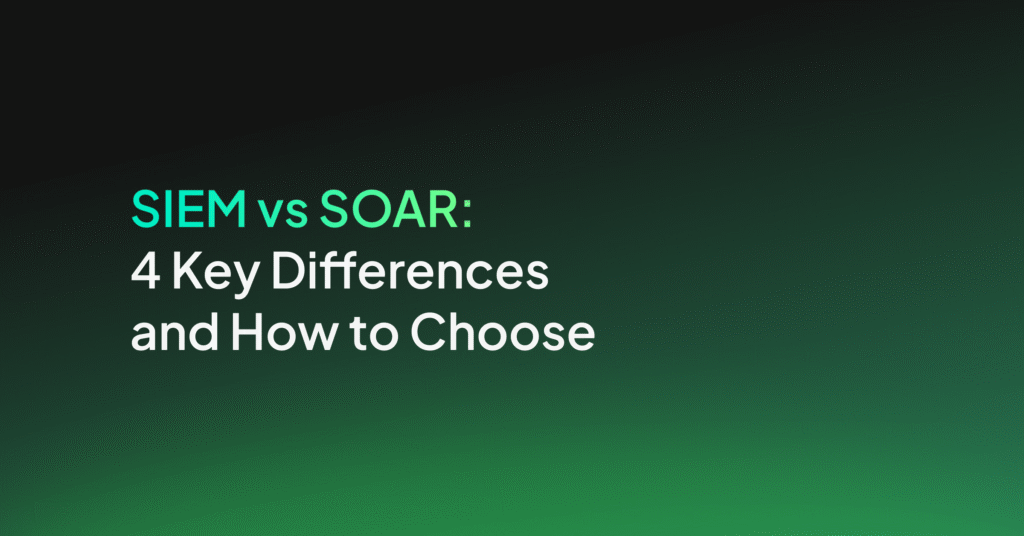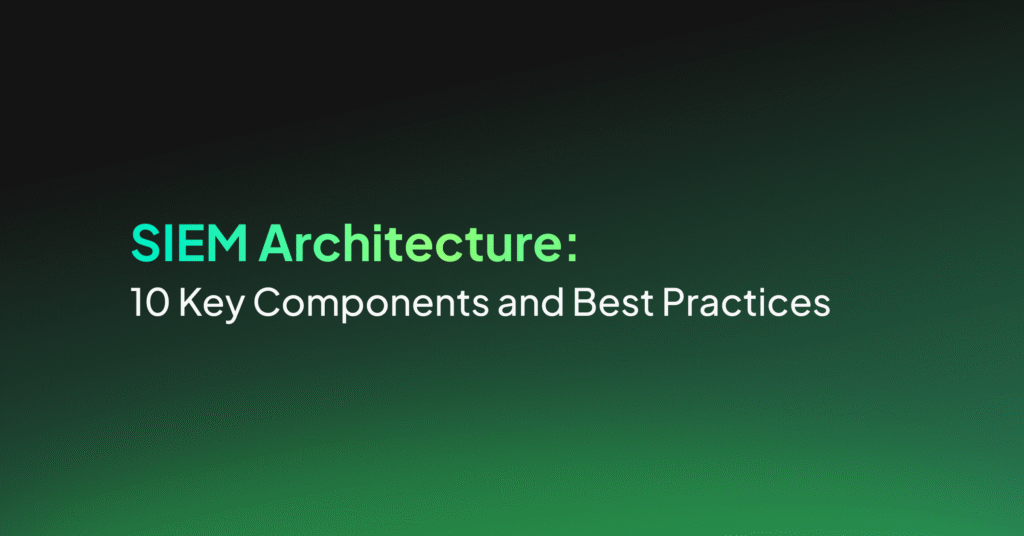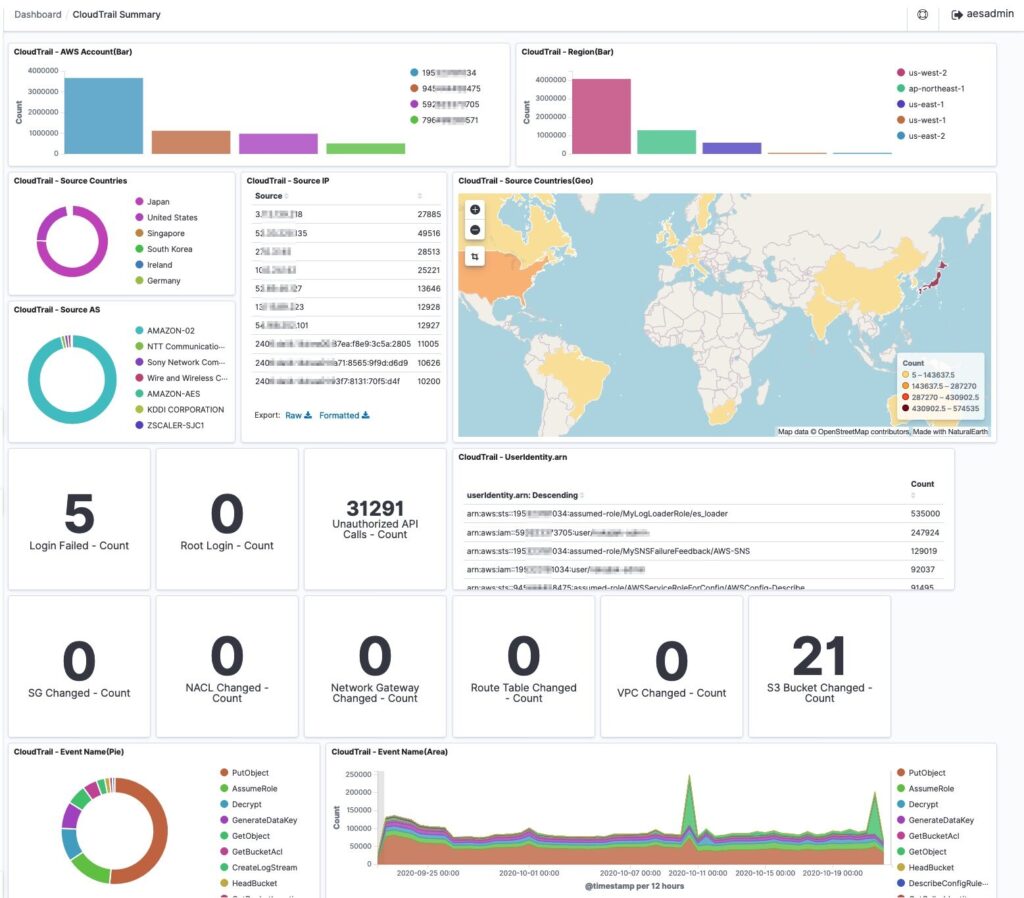Cloud SIEM vs Traditional SIEM: What Is the Difference?

Cloud-Native SIEM Features and Capabilities
Cloud SIEM platforms typically offer the following features:
- Real-time monitoring: They provide continuous observation of security events across an organization’s IT infrastructure, often with the help of machine learning algorithms. This enables swift detection of anomalies and potential threats, enabling immediate investigation and response.
- Customizable alerts: The alert mechanisms built into cloud-native SIEMs offer extensive customization options. Security teams can define alert thresholds and criteria based on their threat landscape and regulatory requirements. These notifications can be delivered through various channels, including email, SMS, and third-party integrations.
- Automation: Cloud-native SIEMs aim to reduce manual effort and minimize human error. Automation can be applied to processes such as incident response, threat hunting, and compliance reporting. This often includes playbooks and automated workflows that guide the response to common security incidents.
- Log management: They collect, normalize, and store log data from various sources, including network devices, servers, and applications. This aggregated data is useful for conducting security analyses and audits. The cloud-based architecture allows for the easy scaling of storage to handle increasing data volumes.
- Data retention: Cloud-native SIEMs can enforce and manage data retention policies that comply with organizational, regulatory, and legal requirements. This ensures that data is retained for the necessary period while also enabling retrieval and analysis of historical data as needed.
- Integration with cloud services: Integration capabilities allow these SIEMs to collect security data from cloud-based applications, platforms, and infrastructure services. This ensures visibility across an organization’s IT landscape and provides a unified view of potential security events. These integrations can also extend to third-party security tools and solutions, enhancing the capabilities of the SIEM.
Traditional SIEM vs Cloud SIEM: Key Differences
Here’s a look at how cloud SIEMs compare to traditional SIEMs in several areas.
1. Deployment Model
Traditional SIEMs are typically deployed on-premises, requiring significant hardware investments and ongoing maintenance. They often require skilled personnel to manage and operate them.
Cloud SIEMs rely on cloud infrastructure, allowing for quicker deployments without the need for extensive hardware resources. This cloud-based model also absorbs much of the operational burden, including patch management and hardware replacements, reducing the workload for IT teams.
2. Data Sources
Traditional SIEMs usually collect data from on-premises systems and require extensive customization to accommodate cloud-based data sources. Integration with new data sources can often be time-consuming, and it may be complicated to create a unified security context.
Cloud SIEMs integrate with a variety of data sources, including both on-premises and cloud-based environments. This flexibility ensures that all relevant data streams are monitored, providing visibility across all IT assets. Cloud SIEMs often provide more advanced capabilities for data normalization and correlation, helping them handle varied data formats from different sources.
3. Scalability
Traditional SIEMs often struggle with scalability. Scaling an on-premises SIEM typically involves purchasing and installing new hardware, which is both time-consuming and costly. This process can delay the responsiveness to emerging threats and changes in the IT environment, potentially leaving gaps in security coverage.
Cloud SIEMs can easily scale to meet growing data volumes and changing security needs, thanks to cloud infrastructure’s inherent flexibility. Whether facing increased data ingestion during peak periods or expanding security monitoring across new business units, cloud SIEMs can easily accommodate these changes without significant reconfiguration or additional hardware investments.
4. Accessibility and Management
Traditional SIEMs generally require on-premises access, which can limit the flexibility of security operations. Management of traditional SIEMs can also be more complex and resource-intensive, often requiring dedicated personnel for maintenance and troubleshooting.
Cloud SIEMs provide superior accessibility and management capabilities compared to traditional SIEMs. They can typically be accessed from anywhere with an Internet connection, providing security teams with real-time visibility and control regardless of their location. This is especially useful for organizations with distributed teams or those embracing remote work models.
5. Maintenance and Updates
Traditional SIEMs require continuous manual maintenance and updates, which can be time-intensive and susceptible to human error. Ensuring that the system is up to date and secure involves regular patches, software updates, and hardware checks, all of which contribute to higher operational costs and resource allocation.
Cloud SIEMs are supported by cloud service providers, which manage the underlying hardware and software updates, ensuring that the SIEM system is always running the latest versions with the most recent security patches. This eliminates the need for the organization to dedicate resources to these tasks, freeing up personnel to focus on more critical security functions.
6. Cost Structure
Traditional SIEMs typically involve significant upfront costs for hardware, software licenses, and setup. Ongoing costs for maintenance, updates, and hardware replacements can add up over time, making the total cost of ownership potentially higher.
Cloud SIEMs operate on a subscription-based model, where organizations pay for what they use, allowing for better budget management and forecasting. This eliminates the upfront capital expenditures associated with purchasing and deploying on-premises hardware and software, reducing financial barriers to entry.
Pros and Cons of Cloud SIEM
Here are the key benefits and disadvantages of implementing a cloud SIEM.
Pros:
- Scalability: Cloud SIEMs can scale to accommodate increasing data volumes and changing security needs.
- Cost efficiency: Operates on a subscription-based model, which reduces upfront capital expenditures and allows for predictable budgeting.
- Rapid deployment: Faster and easier to deploy compared to traditional SIEMs, reducing the time needed to get up and running.
- Accessibility: Provides remote access from anywhere with an Internet connection, enabling real-time monitoring and management.
Cons:
- Data privacy and security concerns: Storing sensitive security data in the cloud may raise concerns about data privacy and compliance, especially for organizations subject to stringent regulatory requirements.
- Dependence on Internet connectivity: Requires a stable Internet connection for continuous operation and accessibility.
- Vendor lock-in: Migrating to a cloud SIEM can lead to dependence on the chosen provider, making it challenging to switch vendors or move back to an on-premises solution.
- Performance concerns: Performance can be affected by the cloud provider’s infrastructure and service quality. There is less control over the system compared to an on-premises environment.
Related content: Read our guide to SIEM tools
Cloud SIEM with Coralogix
Coralogix sets itself apart in observability with its modern architecture, enabling real-time insights into logs, metrics, and traces with built-in cost optimization. Coralogix’s straightforward pricing covers all its platform offerings including APM, RUM, SIEM, infrastructure monitoring and much more. With unparalleled support that features less than 1 minute response times and 1 hour resolution times, Coralogix is a leading choice for thousands of organizations across the globe.





